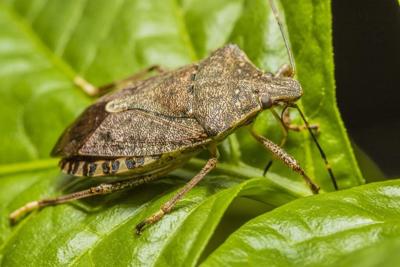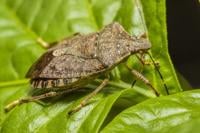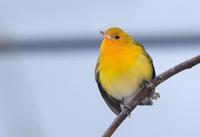VANCOUVER - An aromatic insect shaped like a shield is lurking around homes and feasting on stone fruits in parts of southern British Columbia.
The brown marmorated stink bug, an invasive species in Canada, is thriving in the province this season thanks to summer-like weather extending into the fall months, experts say.
"We've had a particularly warm, dry fall, which are perfect conditions for this stink bug," said Gail Wallin, executive director of the Invasive Species Council of B.C.
Although population counts aren't readily available, the unwelcome intruder is earning notice across the Fraser Valley, Metro Vancouver and parts of the Okanagan, particularly Kelowna.
"We don't have the science on that yet, but what we do know is we're getting way more reports this year," Wallin said, adding that could also be because people are spending more time outside and paying attention.
The Asian insect was first detected in British Columbia in 2015, five years after making its Canadian debut in Hamilton. It has also been spotted in Quebec, Alberta and P.E.I., according to the Invasive Species Centre.
The B.C. government describes it online as a "very serious pest" that feeds on more than 100 plant species. In 2010, it caused an estimated loss of $37 million to the apple industry in the mid-Atlantic United States, the province said.
The presence of just a few adults at crush can taint wine, creating contamination issues for grapes, it said.
"The stink bug is an excellent hitchhiker and can be moved in shipping containers, wood, packing material, cargo and vehicles. It is also a nuisance to homeowners as the adults aggregate on and in buildings while seeking warm overwintering sites," the B.C. government said.
Climate change has also eased the adaptation of many new species, Wallin said. The trouble, once they're introduced, is the way they compete with native species and devastate crops without natural controls on their populations, she said.
"When you introduce any non-native species that become established, it actually disrupts the natural ecosystem, it disrupts the balance of nature," Wallin said.
The brown marmorated stink bug can be distinguished from its native counterparts by its banded white antennae, Wallin added.
So does the stink bug actually live up to its name? If you ask Warren Wong, who studied the brown marmorated stink bug while completing his master's degree at Simon Fraser University, it's not so bad.
"This might be a thing where you've got to love your work. For some people, they may find the stink bug very stinky, but for me, I don't find it repulsive at all," Wong said.
"It smells like freshly cut grass."
Wong, who has moved on to study other pests as a PhD student at the University of British Columbia, said it's most likely that the brown marmorated stink bug travelled on ships, trucks and airplanes to Canada.
"We suspect that they came through transport, essentially through trade, and most likely through multiple introductions," he said.
The population fluctuates with the seasons, with heat waves benefiting the invaders and cool winters slowing their spread, he said.
Interestingly, the same trade routes that brought the stink bug to Canada also likely carried one of its natural rivals, the samurai wasp, Wong added.
If you see a brown marmorated stink bug, the Invasive Species Council of B.C. recommends reporting the insect through its website or the iNaturalist app and being careful not to transport it.
The B.C. government asks growers and homeowners to send pictures or samples of suspect brown marmorated stink bugs to the Ministry of Agriculture offices.
This report by 香港六合彩挂牌资料 was first published Oct. 12, 2022.








































